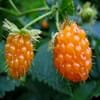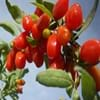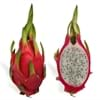Health Benefits
Arthritis prevention, Asthma treatment, Cancer prevention, Kidney stone treatment, Liver health
Cancer prevention, Cures gastro-intestinal troubles, Improves night vision, Improves stomach health, Prevents diabetes, Prevents high blood pressure, Reduces blood circulation problems
General Benefits
Anti oxidant properties, Boosts immune system, Cures cough, Eye care, Fights against infections, Helps in weight loss, Improves eye vision, Maintains healthy cholesterol level, Treatment of common cold
Fights against infections, Helps in weight loss, Prevents blood clotting in vessels, Treatment of urinary tract infections
Skin Benefits
Anti-aging benefits, Brightens and lightens complexion, Reduces wrinkles, Treatment of dark spots
Anti-aging benefits, Nourishes skin, Protects against skin damage
Hair Benefits
Prevents hair loss, Protects hair, Regulates hair growth, Treatment of dandruff
Prevents hair loss
Allergy Symptoms
Abdominal pains, Breathing difficulty, Decrease in blood pressure, Diarrhea, Dizziness, Eczema, Hives, Lightheadedness, Nausea, Runny nose, Sneezing, Swelling of mouth, tongue or lips, Vomiting, Wheezing
Not Available
Side Effects
Allergic reaction
Decrease in blood sugar levels, Diarrhoea, Dizziness, Headache, Internal bleeding, Stomach pain
Best Time to Eat
As a snack in the late afternoon, Eat the fresh ones, avoid mixing with any other foods, don't eat after meal., Morning time (before lunch), Strictly avoid empty stomach
As a snack in the late afternoon, Don't consume at night and before bed, Eat the fresh ones, avoid mixing with any other foods, don't eat after meal., Morning time (before lunch)
Vitamin B5 (Pantothenic Acid)
Vitamin C (Ascorbic Acid)
Vitamin K (Phyllochinone)
Calories in Fresh Fruit with Peel
Not Available
Calories in Fresh Fruit without Peel
Not Available
Calories in Frozen Form
Not Available
Not Available
Calories in Dried Form
Not Available
Calories in Canned Form
Not Available
Type
Citrus, Tree fruit
Berry
Season
All seasons
Summer
Varieties
Duncan, Marsh and Oro Blanco
Dwarf bilberry, Piper, bog blueberry, Northern bilberry, Mountain bilberry and Oval-leaved bilberry
Inside Color
Creamy Yellow
Light Green
Soil Type
Loam, Well-drained
Moist, Well-aerated
Climatic Conditions
Humid, Warm
Cold
Facts about
- February is known as National Grapefruit Month.
- It is called as state fruit of texas.
- No mechanical devices are used while picking grapefruits, they are always handpicked.
- Bilberries are used in manufacturing of alcoholic drinks.
- They are used to improve aromas of sorbets.
- The green extract of it's leaves is used in textile industry as natural dye.
Other Countries
Argentina, India, Israel, Mexico, South Africa, Sudan, Thailand, Turkey, United States of America
Denmark, Finland, Iceland, Sweden
Top Importer
Europe
United States of America
Top Exporter
United States of America
Chile
Botanical Name
Citrus paradisi
Vaccinium myrtillus
Synonym
Not Available
blaeberry, whinberry, European blueberry, whortleberry
Subkingdom
Tracheobionta
Tracheobionta
Division
Magnoliophyta
Magnoliophyta
Class
Magnoliopsida
Magnoliopsida
Subclass
Rosidae
Dillenhidae
Order
Sapindales
Ericales
Family
Rutaceae
Ericaceae
Species
C. × paradisi
Vaccinium myrtillus
Generic Group
Citrus fruit
Heath
Difference Between White Grapefruit and Bilberry
We might think that White Grapefruit and Bilberry are similar with respect to nutritional value and health benefits. But the nutrient content of both fruits is different. White Grapefruit and Bilberry Facts such as their taste, shape, color, and size are also distinct. The difference between White Grapefruit and Bilberry is explained here.
The amount of calories in 100 gm of fresh White Grapefruit and Bilberry with peel is Not Available and 44.00 kcal and the amount of calories without peel is 33.00 kcal and Not Available respectively. Thus, White Grapefruit and Bilberry belong to Low Calorie Fruits and Low Calorie Fruits category.These fruits might or might not differ with respect to their scientific classification. The order of White Grapefruit and Bilberry is Sapindales and Ericales respectively. White Grapefruit belongs to Rutaceae family and Bilberry belongs to Ericaceae family. White Grapefruit belongs to Citrus genus of C. × paradisi species and Bilberry belongs to Vaccinium genus of Vaccinium myrtillus species. Beings plants, both fruits belong to Plantae Kingdom.









